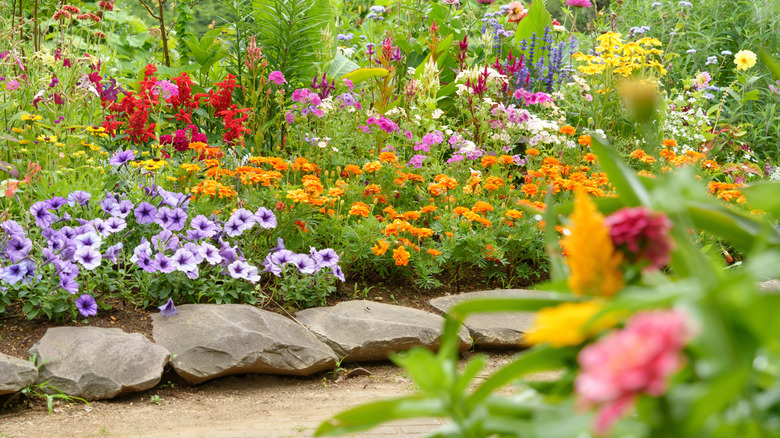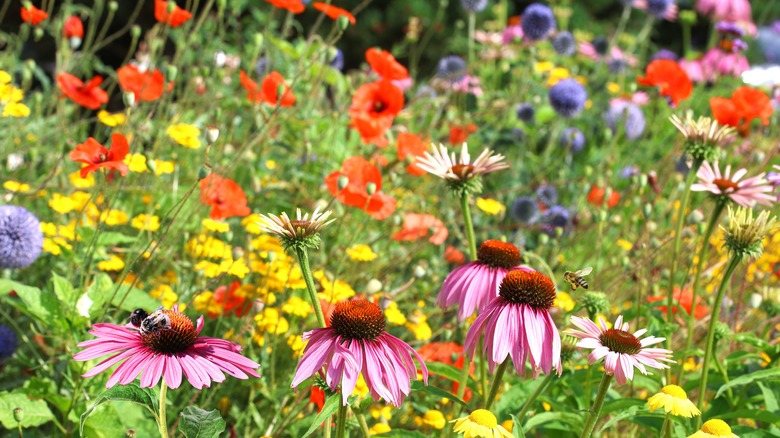The Number One Flower You Should Be Adding To Your Chaos Garden
With an attention-grabbing name, chaos gardening is a movement against tidy flower beds and symmetrical foundation plantings. In this relaxed gardening trend that's replacing formal landscaping, much is left to chance. However, to create a garden where disorder is allowed to reign, starting with the right plants is important, and that's why coneflower (Echinacea spp.) is the number one flower you should be adding to your chaos garden.
Chaos gardening conjures up visions of meadows and woodland edges encountered in the wild rather than well-groomed botanical gardens. Gardeners sow seeds willy nilly rather than using grid paper and measuring tape to plan out a design. The best options are native to your local region, perennial, and require little maintenance. Coneflowers check all three boxes, and you'll love their beautiful blooms, eye-catching textures, and contrasting color combinations.
Among the different varieties of coneflower, one of the most popular is purple coneflower (Echinacea purpurea), whose large flowers have mounded orange centers and long, purple petals. These blooms are daisy-like, and when combined with flowers such as asters and rudbeckia, there will be an eye-pleasing visual echo in the landscape, while at the same time attracting an abundance of pollinators.
These drought-tolerant perennials self-seed at will but spread slowly from their roots, so they will not take over your entire planting space like goldenrod will. And when you're ready to create a new chaos garden patch elsewhere, you can easily collect seeds from the coneflowers to sow in the new location.
How to grow coneflowers in a chaos garden
If you're smitten with these gorgeous native plants and are ready to incorporate them into your own chaos garden, you'll be happy to know that growing and caring for coneflowers is fairly easy in USDA Zones 3 to 9. Plant them in full sun to part shade and in well-draining soil that is rich in organic matter for the best results. While coneflowers are drought-tolerant once established, they'll need irrigation if the weather is dry after sowing or transplanting.
If growing from seed, sow them in place in autumn after the first frost of the season. Be sure to clear away enough vegetation so that the germinating seedlings get enough sun, and keep the seeds moist and cool all winter as well. When you're starting with plants, the best time to transplant is spring or fall. However, if you find a deal at your local nursery in summer and want to go ahead and add coneflower plants to your chaos garden anyway, choose a planting day when the weather is cool and cloudy. Waiting until after sunset will also help the young plants settle in without the stress of the hot sun beating down on them.

